All issues

Volume 7 (1972)
- Issue 6 Pages 281-
- Issue 5 Pages 225-
- Issue 4 Pages 149-
- Issue 3 Pages 87-
- Issue 2 Pages 49-
- Issue 1 Pages 1-
Volume 7, Issue 6
Displaying 1-4 of 4 articles from this issue
- |<
- <
- 1
- >
- >|
-
Hiroyasu OGIWARA, Hiroo YONEMITSU1972Volume 7Issue 6 Pages 281-290
Published: February 25, 1973
Released on J-STAGE: June 30, 2010
JOURNAL FREE ACCESSWe had already a few examples of applications of superconductivity to power uses which showed promising performances in the test operations. Concerning the size and the strength of the magnetic field needed for realizing the large scale superconducting electrical machines, it can be said that the possibility is in the range of the state-of-the art. However, we are still under restriction of the lack of ac superconduting wire and necessity of the 4.2K refrigeration.
The merits we may obtain in using superconductivity in the power apparatus are; (1) zero-loss with dc current, and (2) the high magnetic field with a large amount of the current. The demerits, however, are; (3) disappearance of loss-less characteristics when used with ac current, and (4) necessity of the refrigeration of 4.2K with penalty of low efficiency. The power transformer is omitted in this review because of being operated with ac current. The power transmission lines, the superconducting systems for supporting an ultra-high speed train, the linear synchronous motors for driving such vehicles and the large scale superconducting coils for energy storage for peaking and emergency uses, are also put aside because we have some articles reviewing the current status of the technology.
Therefore, the electrical apparatus which are discussed in this review are the generators and motors, of which the promising features of rating-up with superconductivity have been shown by engineers studying applications of superconductivity. In order to demonstrate the feasibility of the large scale superconducting machines, the developments of the homopolar machines; generators and a motor for special uses, and the synchronous generators are in progress with the sponsorship of the user-side. However, a problem how to get and maintain the helium resources has to be solved before the full application of superconductivity to the electrical machines will have been established.View full abstractDownload PDF (1874K) -
Hiroshi KOIZUMI1972Volume 7Issue 6 Pages 291-302
Published: February 25, 1973
Released on J-STAGE: June 30, 2010
JOURNAL FREE ACCESSIt is well known that the liquid nitrogen is being used as the refrigerant for cryogenic physics and chemistry, precooling of helium gas to liquefy, heat shield in liquid helium container, cold trap in high vacuum system, precooling of superconducting magnet, experiment of cryogenic power transmission, and low temperature adsorption to purify the gases. Moreover, in space development, liquid nitrogen is used to cool the fuel tanks of the rocket and for all kinds of low temperature environmental testing. But it can be seen that they are special usage in limited research field.
On the other hand, the large scale production of oxygen by the recent remarkable demand in iron and steel making industry has brought the lowering of the gas cost. This trend is promoting extensive utilization of liquid nitrogen not only in special research field but also in ordinary industrial field.
This paper describes many useful methods of liquid nitrogen use in industry such as food, construction, rubber, metals fabrication, crushing, biology and medicine.
In the future, it is supposed that a large amount of liquid nitrogen will be consumed for disposing of waste materials in a point of view to prevent environmental pollution and to reclaim them.View full abstractDownload PDF (1794K) -
Keiichi HAYASAKA1972Volume 7Issue 6 Pages 303-305
Published: February 25, 1973
Released on J-STAGE: June 30, 2010
JOURNAL FREE ACCESSA report is made of topics on low temperature techniques for recovery and purification of helium in cryogenic laboratory.View full abstractDownload PDF (406K) -
Hiroshi IMADA, Isamu TATARA, Takefumi HORIUCHI1972Volume 7Issue 6 Pages 306-309
Published: February 25, 1973
Released on J-STAGE: June 30, 2010
JOURNAL FREE ACCESSA constant volume gas thermometer made for calibration of resistance thermometers and thermocouples over a temperature range from 4.2 to 100K is described. The absolute temperature was determined by calibrating it at only two known temperatures, for example, boiling points of oxygen and He4. Several sources of error in temperature measurements by use of this gas thermometer were considered, and main error came from pressure measurements. The accuracy of the temperature measurements was better than ±1.9% at 4.2K, ±0.8% at 20K and ±1.0% at 100K.View full abstractDownload PDF (487K)
- |<
- <
- 1
- >
- >|